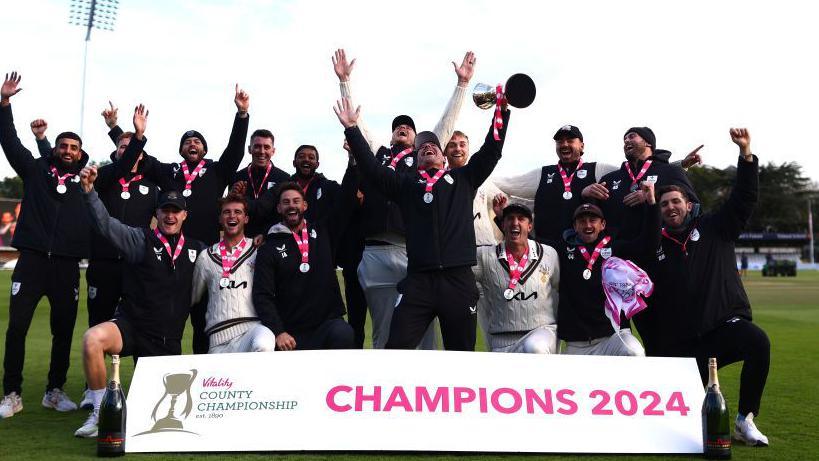The future of English county cricket’s premier red-ball competition hangs in uncertainty as debates over structural reforms grow increasingly contentious. Proposed County Championship changes, initially slated for 2026, now face potential delays or even abandonment amid fierce disagreements among stakeholders. With the 2024 season nearing its climax, the sport finds itself at a crossroads between tradition and evolution.
County Championship Changes: A Timeline in Flux
Discussions to restructure the tournament have unfolded throughout the season, with the Professional Cricketers’ Association (PCA) advocating for a reduced schedule to alleviate player workloads. While a trimmed T20 Blast calendar gained approval in August, consensus on the Championship’s format remains elusive. The original ambition to implement adjustments by 2026 now appears optimistic, with county chairs recently floating 2027 as a more plausible target—if changes materialize at all. This potential delay stems from both logistical complexities and a desire to avoid rushed decisions as the current season concludes next week.
The Battle Over Match Volume
At the heart of negotiations lies a sharp divide over fixture density:
– Proposed Reductions: The PCA championed cutting first-class matches from 14 to 12 per county, arguing this would protect player welfare amid cricket’s increasingly congested calendar. When this plan faced rejection, a compromise emerged: a 13-game model blending traditional divisions with conference-style groupings.
– Traditionalist Pushback: Several counties have dug in against any reduction, fearing diminished commercial returns and competitive integrity. Their preference for retaining 14 matches gained momentum as talks progressed, particularly after the 12-game option was vetoed.
Dissecting the 13-Game Proposal
The most debated alternative would dismantle the current two-division framework, replacing it with a hybrid structure:
1. First Tier Expansion: Eighteen teams would split into a 12-county top tier, subdivided into two groups of six. Teams would play group rivals twice before advancing to crossover matches against similarly ranked sides from the opposing group. This convoluted path would culminate in a single champion based on cumulative points.
2. Second Tier Contraction: The remaining six counties would form Division Two, grappling with an asymmetrical schedule where some opponents are faced twice and others three times. Unlike the current promotion-relegation system, this model would see the top two second-tier clubs replace the lowest finishers from both top-tier groups.
Proponents argue this system:
– Reduces player workload by one first-class match annually
– Allows more counties to compete for the title
– Increases promotion opportunities for perennial strugglers
Critics counter that the format:
– Lacks the simplicity of the current divisional system
– Dilutes elite competition by expanding the top tier
– Creates uneven fixtures in Division Two
PCA’s Pivotal Role and Rising Tensions
The players’ union escalated the stakes in July by declaring a 12-game Championship the “only reasonable option.” Though forced to accept the 13-match compromise after the 12-game plan failed, the PCA warned that retaining 14 matches risks alienating players already stretched by franchise league commitments. While strike action appears improbable, alternative protests—such as coordinated media criticism or symbolic gestures—could emerge if counties ignore workload concerns.
Why Deadlock Threatens Progress
Altering the Championship’s structure requires approval from 12 of the 18 first-class counties—a threshold now in doubt. Recent developments reveal:
– Multiple clubs publicly oppose reducing matches
– Smaller counties fear revenue losses from fewer home games
– Elite sides prioritize “best vs. best” competitiveness over expanded access
This impasse increases the likelihood of preserving the status quo: ten teams in Division One, eight in Division Two, and 14 matches per side. Yet this outcome would strain player relations and amplify calls for independent mediation.
The Road Ahead
With county chairs expected to vote imminently, three scenarios remain plausible:
1. Late Compromise: Adoption of the 13-game hybrid model for 2026
2. Temporary Delay: Postponing reforms until 2027 for further consultation
3. Status Quo: Retaining the 14-game format indefinitely
The Cricket Regulatory Authority (CRA) has urged counties to prioritize long-term benefits over short-term interests, emphasizing the Championship’s role as English cricket’s talent incubator. As technicians finalize 2025 schedules, the window for structural changes narrows daily.
Balancing Tradition and Progress
The County Championship remains the historic heartbeat of English cricket—a 133-year-old institution grappling with 21st-century pressures. While commercial realities and player welfare demand modernization, the competition’s soul lies in its enduring rhythms: seamers exploiting cloud cover at Derby, spinners weaving webs at Taunton, and batters weathering storms at Headingley. Whatever resolution emerges must honor this legacy while embracing necessary evolution.
As stakeholders weigh prestige against pragmatism, one truth becomes undeniable: the County Championship changes debate transcends scheduling spreadsheets. It’s a referendum on what English cricket values most—and what sacrifices it’s willing to make for its survival.
